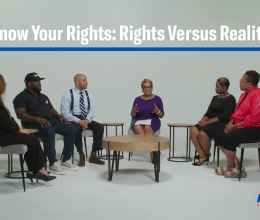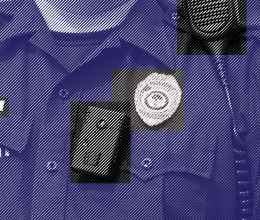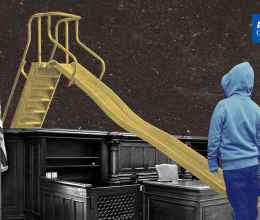Multiple members of the Cincinnati school board have acknowledged that CPS discipline needs reform. Our data confirms that police presence in Cincinnati schools has horrific effects on the well-being of students.
Recently, we filed public records requests with both Cincinnati Police Department (CPD) and Cincinnati Public Schools (CPS) to obtain all records relating to SROs and student discipline from 2016 to present. CPS keeps no records of SRO involvement in its own schools. CPD does.
The SRO Program (and the current contract)
CPS and CPD have a contract to place School Resource Officers (SROs) in each high school, and each SRO is assigned a block of 4-6 additional schools to patrol, including elementary and middle schools. This partnership began in 1967. While many often note that SROs function as mentors, CPD cautions that SROs are “first and foremost police officers… [who] enforce laws on school grounds.” And this is true; with the exception of just 40 hours of adolescent training, Cincinnati SROs are trained and equipped like any standard beat cop—with a gun, taser, bodycam, baton, handcuffs, and armor—but their assignment is students and their territory schools.
But Cincinnati’s SRO program differs from the norm. CPD holds absolute power over the contract. Normally, these partnerships are just that—partnerships—where each side holds equal bargaining and enforcement power. Schools usually retain the right to conduct independent performance evaluations of SROs, receive reports of SRO interactions, establish law enforcement intervention policies, and determine the identity and placement of SROs within the district. This is not the case in Cincinnati.
Under the current “Memorandum of Understanding” (MOU) between the school district and the police, CPD holds absolute power to decide the number, identity, and placement of SROs. CPD is not required to report any statistics about law enforcement interactions with students to CPS. CPD sergeants conduct the only performance evaluations of SROs, and CPD investigates all complaints against SROs. Additionally, there is no requirement that evaluation or investigation reports be shared with CPS. CPS has only been able to keep its power to (1) define when SROs may intervene (a discretionary and unclear standard, at best) and (2) end the contract at any time.
The takeaway: CPS has no power to monitor what police officers are doing in its schools to its children.
CPD Interaction by the Numbers:
CPS currently uses a discipline scheme that places a heavy emphasis on exclusionary discipline. Students are routinely removed from the classroom for minor offenses such as suspensions for disorderly conduct (a vague, catch-all offense) or law enforcement referrals for typical fistfights that shouldn’t ring the alarm as a high-alert emergency. In practice, CPS and SROs unjustly punish Black students more than any other group, despite that students commit the same rates of misbehaviors regardless of race. Black students in CPS are 5x more likely to face exclusionary discipline than their white peers. But even if punitive discipline in CPS was racially proportionate, exclusionary discipline is used far too frequently when restorative measures would be more effective. Law enforcement interaction numbers make that abundantly clear.
According to the records obtained, SROs responded to 4,850 on-campus, during-school-hours, radio dispatches from school staff or CPD in an average school year. At least 60% of those dispatches were so minor that they didn’t result in law enforcement discipline, not even a behavioral intervention conference. It’s clear the vast majority of school incidents can be handled by teachers or school administrators and should not merit police intervention. But Cincinnati Public Schools has created a culture of calling SROs at any sign of misbehavior, no matter how small. When police are called, formal interactions with the justice system skyrocket, ruining students’ lives before they can truly begin.
With 273 arrests in a 180 calendar day school year, CPD officers are arresting approximately 2 students per school day. But they are negatively interacting with even more: over 400 CPS students negatively interact with the justice system each year as a direct product of having police in schools. SRO arrests take two main forms: (1) formal arrest and transport to a holding facility or (2) immediate release and a court summons for a later date. Both can result in harrowing consequences—like jail time, probation, fines and court costs, and the creation of a criminal record—for students that follow them throughout adulthood and compound a child’s success because of school absence. Likewise, warrants force students to interact with SROs against their will almost exclusively for non-urgent situations that could be handled by school staff (i.e. personal belongings search for drugs, questioning of students).
Critically, the preferred type of discipline is up to SRO discretion and varies widely between officers. While the MOU and CPD prescribes policies for whether an arrest, warrant, or behavioral intervention conference are acceptable, officers consistently favor one form of discipline over others for all types and severity of misbehavior.
For example, one officer preferred both warrants and conferences (3 arrests, 60 warrants, 100 conferences). Another used only arrests (48 arrests, 0 warrants, 0 conferences). A third liked conferences the most (2 arrests, 2 warrants, 200 conferences). This seemingly random preference for one form of discipline over another harms students who find themselves unlucky to be assigned with an arrest-heavy SRO
The perception of some schools as “more dangerous” has no relation to the number of police interactions on campus. SRO intervention frequency is determined by specific SROs, not specific schools. Officers who were reassigned within CPS maintained consistent discipline rates despite changes in perceived school danger. But schools saw massive fluctuations despite similar frequency and severity of misbehavior by students. For example, the same SRO made 50 arrests at both the “safe” school and the “dangerous” school, but when the “dangerous” school switched from an SRO who preferred arrests to an SRO who deferred to school staff, arrests declined from 60 to 15 per year.
Cincinnati SROs visit up to 7 schools (average 2.6) a day. While police spend the majority of their time at their assigned high school, they frequently visit all grade levels each day. That means that armed police patrol the hallways of elementary schools and may participate in discipline of children as young as 5. Additionally, spending an hour on each campus makes CPDs stated program goal of creating “meaningful relationships” with children nearly impossible. Instead, the rotation looks more like a standard “beat” where policing—rather than mentoring—youth is the unit’s aim.
When it comes to mentoring, the duration, content, and personalization of SRO behavior intervention conferences (the most common SRO mentoring tool) is not standardized. A “conference” can be as broad as a lengthy 1-on-1 meeting with a child or a mass email to parents. In one instance, an SRO recorded 100 conferences in one 8-hour shift, likely a mass email, which cannot yield individualized mentorship or support. Because these conferences are private, we don’t know what SROs say to students or whether their strategies are backed by clinical science. Their frequent use suggests “positive” behavior intervention is a primary job task, despite no counseling or psychology qualifications. While behavioral intervention conferences are helpful, students are much better served when trained adolescent mental health professionals take charge.
Even simple hallway interactions can be detrimental to student success. Some CPD SRO performance evaluations show a history of intimidating and rude behavior when talking with students, harming their trust in, and relationship, with law enforcement in opposition to the program’s goals of bettering police-community relations.
What You Can Do:
A successful plan to address racially disparate discipline in Cincinnati Public Schools (CPS) must be multifaceted. CPS must (1) replace zero tolerance policies with restorative justice practices, (2) terminate the Memorandum of Understanding with the Cincinnati Police Department (CPD) and remove all School Resource Officers (SROs), and (3) undergo regular audits of discipline data.
###
Join our fight! Take our survey about policing and discipline in Cincinnati Public Schools. Urge the school board to enact change. Review the one-pager analysis with all of our data findings.







